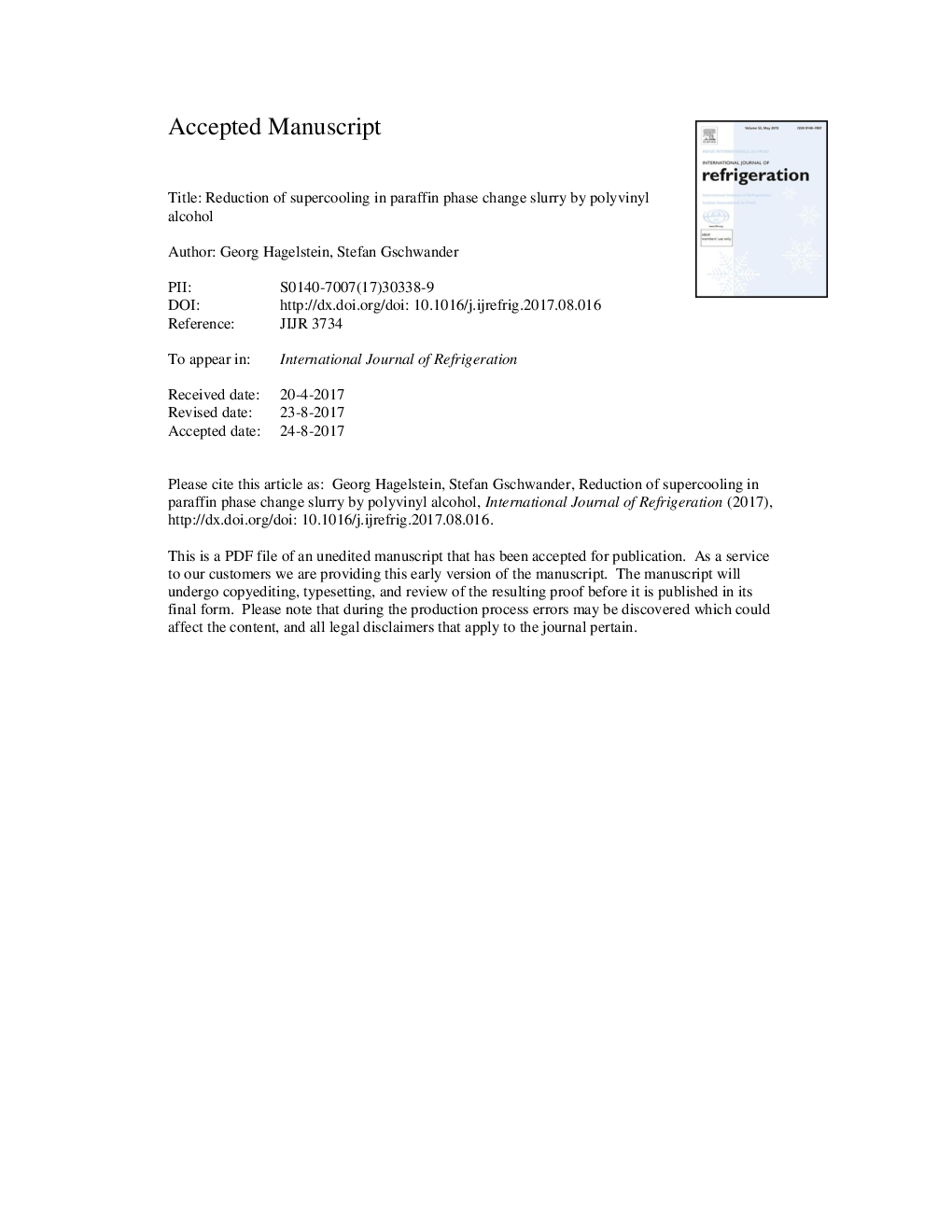| Article ID | Journal | Published Year | Pages | File Type |
|---|---|---|---|---|
| 5016937 | International Journal of Refrigeration | 2017 | 18 Pages |
Abstract
Dispersed phase change materials (PCM) tend to supercool due to absence of nucleation promoting surfaces. Surfactants stabilizing phase change slurries (PCS) offer a useful surface to catalysing nucleation at the particle interface. Temperature dependent X-ray diffraction (XRD) and differential scanning calorimetry (DSC) analysis were used to investigate the crystallization of n-octadecane-water-slurries stabilized by common used surfactants (Triton X100, Tween60 and Span60) as well as by several polyvinyl alcohols (PVA) differing in degree of hydrolyses and polymerization. With PVA supercooling of these phase change slurries is reduced from 12âK down to 2âK independent of the particle size, whereas other surfactants reduce supercooling by 2âK. The results are discussed by taking into account nucleation acceleration through PVA crystals which are partially formed at the paraffin-water interface. The results show that PVA combines the two functionalities to act as surfactant and as nucleating agents in paraffin slurries.
Related Topics
Physical Sciences and Engineering
Engineering
Mechanical Engineering
Authors
Georg Hagelstein, Stefan Gschwander,
